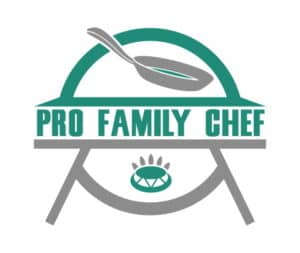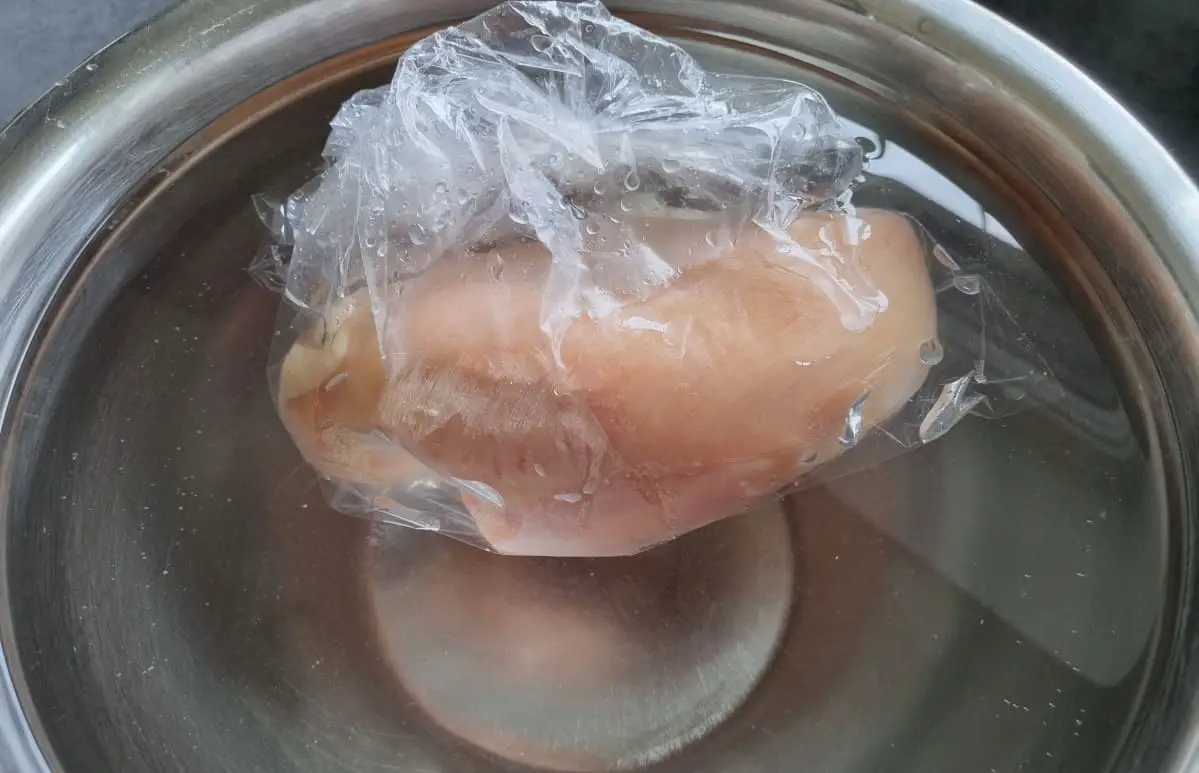As a home cook, you’re bound to encounter a situation where you need to quickly thaw a piece of meat – be it for a spontaneous dinner or a last-minute change in your meal plan. This article is designed to help answer all your queries about thawing meat, specifically chicken, in water.
The main question is: do you thaw meat in cold, warm, or hot water?
Indeed, it is safe to thaw meat in cold water, but thawing it in hot water is not advisable. Ideally, meat should be thawed in water at a temperature of 40°F (4°C) or below. This method is both safe and efficient due to the high thermal conductivity of water, which enables it to transfer heat more quickly than air, facilitating a faster thawing process.
The Basics: Can You Thaw Chicken in Water?
The simple answer is yes, you can thaw chicken in water. However, the method and type of water used significantly impact the safety and quality of the thawed chicken.
Can you defrost chicken in cold water
The USDA Food Safety and Inspection Service recommends thawing frozen chicken in cold water. This method is not only safe but also faster than thawing in the refrigerator. However, there are a few guidelines to follow:
- Always use a leak-proof plastic bag: The chicken should be sealed to prevent water from damaging the meat and bacteria from spreading.
- Submerge in cold water: Completely submerge the bagged chicken in cold tap water.
- Change the water every 30 minutes: This prevents the water from reaching unsafe temperatures.
How Long to Thaw Chicken in Cold Water
Typically, small chicken pieces should thaw in an hour or less. A whole chicken may take up to 2-3 hours. Remember to cook immediately after thawing using this method.
Thawing Chicken in Hot Water
While it may seem quicker, defrosting chicken in hot water is not recommended. It can lead to uneven thawing, and the outer layer might begin to cook while the inside remains frozen.
Can You Thaw Chicken in Water Unwrapped?
Thawing chicken in water unwrapped is not recommended. This exposes the chicken to potential bacterial contamination and can also negatively affect the texture and flavor of your meat.
Thawing Chicken Breast in Water
The process of thawing chicken breasts in water is no different than that for whole chicken. It’s best to use the cold water method and ensure the breasts are thawed thoroughly before cooking.
How to Defrost Chicken in the Sink
Defrosting chicken in the sink follows the same general principles as thawing chicken in cold water. Here’s a step-by-step guide on how to defrost chicken in the sink:
- Bag your chicken: Place your frozen chicken in a leak-proof plastic bag if it isn’t in one already.
- Fill the sink: Fill your sink or a large bowl with cold tap water.
- Submerge the chicken: Submerge the bagged chicken in the water.
- Change water regularly: Replace the water every 30 minutes until the chicken is thawed.
- Cook immediately: Once thawed, pat the chicken with a clean kitchen towel and cook the chicken immediately.
Remember, never defrost chicken under running water. It wastes water and can potentially spread bacteria.
The Risks of Thawing Frozen Meat in Warm or Hot Water
Warm water
According to the United States department of Agriculture, food that falls under the category of perishable food should never be left on the counter at room temperature for more than two hours, and should also not be left on the counter to thaw out. In addition, it should not be thawed out in warm water either.
When using warm water to thaw meat products, you will be able to effectively thaw the meat, but you will also possibly begin to cook the meat. Certain parts of the meat surface may start to cook and the temperature may rise above 40°F (4°C). This is a problem as it will put the meat in what is known as the danger zone.
The danger zone is a temperature range between 40°F and 140°F (4°C and 60°C ) where microorganisms will start to form on the surface of the perishable food item. It may cause food-borne illnesses to develop which may make you very sick.
Hot water
This debate is quite similar to defrosting meat in warm water. While you can do it, there is a series of potential health risks involved and that is why most food experts and chefs would highly recommend that you do not do it.
Much like warm water, hot water may defrost the meat but may also cause parts of the meat to start cooking and place these parts or the whole piece of meat in the danger zone.
While it is not recommended by the United States Department of Agriculture, New York Times states that there have been studies conducted which indicate that it may in fact be safe to thaw meat out in hot water.
However, the methods are not yet recommended. What the study highlights is that it is possible to do this without causing the meat to enter the danger zone.
Can you thaw frozen ground beef in hot water
Ground beef should never be thawed in hot water. Raw meat naturally has a layer of bacteria that sits on the surface of the meat. With ground beef, this surface layer of bacteria is spread out throughout the meat.
Thawing ground beef in hot water will cause the surface of the meat to start cooking and will subsequently place the meat in the danger zone.
In order to thaw ground beef, the meat must be placed in a sealable plastic bag. The bag must be placed in a bowl of cold tap water and allowed to thaw out. The water should ideally be changed every 30 minutes or so to ensure that the meat is thawing in temperature approriate water.
Can you thaw hamburger meat in hot water
Hamburger meat and ground beef are essentially the same thing. There is a key difference between the two though. While both products may contain beef fat, hamburger meat may not contain more than 30% of the beef fat.
The same rule that applies to thawing ground beef in hot water also applies to thawing hamburger meat in hot water. The water may cause the meat to start cooking and place it directly in the danger zone.
Can you run hot water over frozen meat

No. Running hot or even warm water over frozen meat is essentially much worse than putting the meat on the counter and allowing it to thaw over several hours.
The hot water will cause the surface of the meat to start cooking. In addition, by placing the meat under a stream of hot water will only cause one section of the packaged meat to start cooking while the rest of the meat remains frozen. This is very dangerous.
It may be better to run cold tap water over the frozen meat. As previously stated, water is an excellent conductor of heat. The water may allow the meat to defrost quicker, provided that is is below 40°F.
Alternatively, you could place the meat in a sealed ziplock back and place the meat in a salt water bath. The melting temperature of saltwater is lower than normal tap water which may help to defrost the meat even faster.
Does meat thaw faster in cold water or hot water
Hot water may thaw the surface area of the meat much faster but leave the center of the meat cold. This creates a situation where the meat enters the danger zone.
Cold water on the other hand, may help to thaw out food much faster and is essentially much safer than thawing food in hot water.
This is because water heat capacity allows it to thaw out meat faster. The heat capacity of water refers to its ability to store heat inside. Essentially, the cold water holds a lot of heat energy inside which the meat is able to absorb.
This allows the meat to thaw out much faster in cold water than in hot water.

